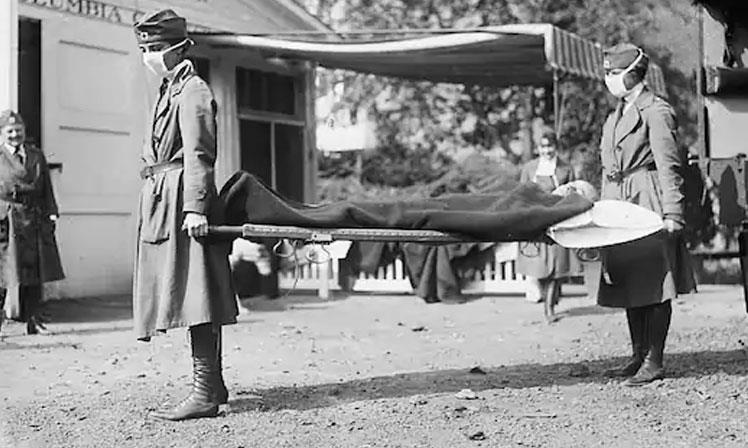
Six months before the armistice was signed between the warring sides to bring curtains down on World War I in 1918, an �unusually fatal� respiratory disease caught the attention of physicians at a British training camp in Eaples in France. Nearly half of those showing influenza like clinical symptoms were succumbing to the infections.
Spain remained neutral through the entire conflict. When the war ended, Portuguese soldiers who were exposed to the virus in France infected others as they passed through the Basque territory on their way home. The health outbreak got widespread coverage in the Spanish media when the King Alfonso XIII got the illness. The disease thus acquired a name: the Spanish Flu.
By the fall of 1918, soldiers from other allied nations had carried the pathogen to nearly all continents to trigger one of the deadliest pandemics in the recorded history of humans.
First cases of the Spanish Flu in India are reported in Bombay, the port of arrival for soldiers from Europe after WWI.
Over the next two years the virus would slowly spread to other provinces killing between 12.5 and 20 million people consuming nearly 4% of the population. Every second infected person succumbed to the disease.
Research on 1918 Spanish Flu Pandemic in India shows the disease was brought to the Indian shores by the soldiers returning home after World War I. The �locations close to an entry point had extremely short windows of time to deal with a virulent pathogen, placing emphasis on the emergency management of a short and severe wave of illness. While locations that were distant from the entry point will have longer windows of time to prepare for and deal with less lethal variants of the disease, their task will be prolonged by the more gradual build-up and subsidence of the epidemic wave.� (Chandra and Kassens-Noor: The Evolution of Pandemic Influenza: Evidence from India, 1918�19)
In the case of Covid-19 also, we see the first infections have been reported in areas which are major port of entry for travellers returning home from trips abroad. So, as in 1918 pandemic, infections have started to rise in cities like Mumbai, Delhi, Chennai and Kerala. The other parts of the country in the meantime have got a window utilise this time to prepare before the onset of the outbreak.
The United States was another country to register a high mortality during the epidemic. The Spanish Flu swept through vast swathes of the US in three waves between 1918 and 1919, claiming more than 650,000 victims.
Leave a comment: (Your email will not be published)